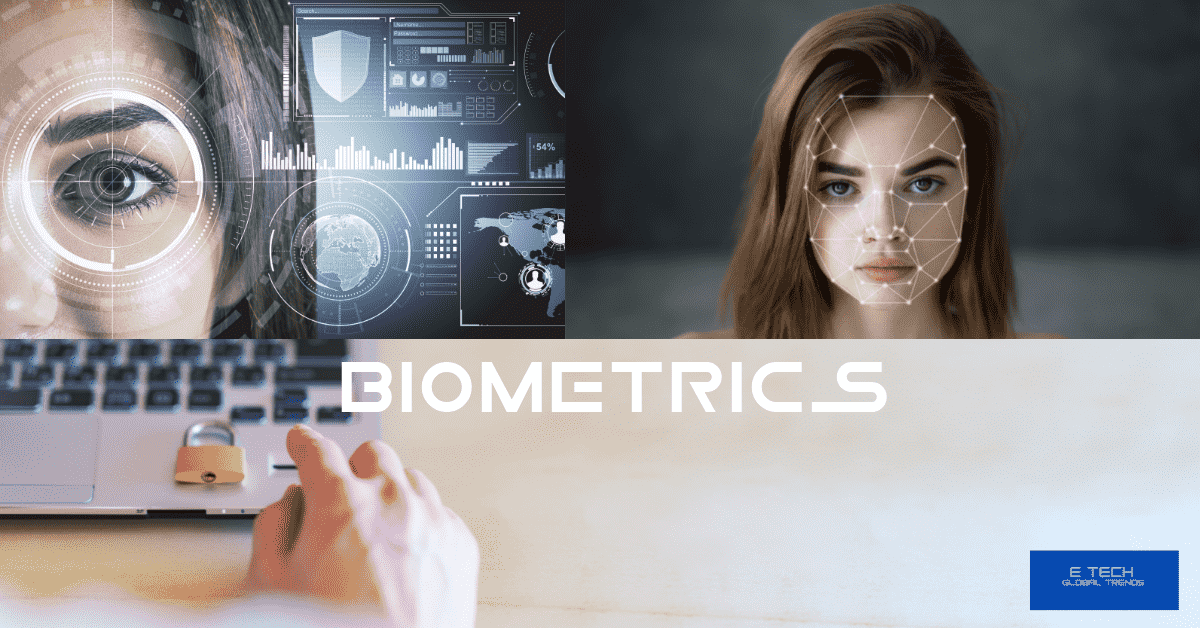How does Biometrics improve cyber security?
Every day, Google adds 10,000 new websites to its blacklist! Every three months, almost 600,000 WordPress websites were hacked! There are approximately 2,200 cyberattacks per day, which could equate to more than 800,000 bank accounts being hacked each year! Even though they have two-step authentication, high-earning YouTube channels were recently hijacked. what?… Is that true? Yes, it is…according to recent studies. Due to security conditions. Is the security of your website, internet company, bank account, or YouTube channel sufficient? It’s time to take action soon. Well, how to do this? Of course, we bring this vital article with a new vision. “How does Biometrics improve cyber security? Let’s see how…
What is the meaning of biometric technology?
Let’s get more precise. Biometrics are biological calculations. Or biological parameters. In the form of physical characteristics that can use to identify users. What are the basic and popular concepts? So the biometrics technology is…
- Fingerprint mapping
- Facial recognition
- Retina scans
are all examples of biometric technology. but these are only the most well-known.in addition to basic types, there are a few different types
What types of biometric technology are there?
- DNA
- Hand Geometry
- Ear Recognition
- Bones and Teeth
- Signature
- Keystroke
- Voice
Even though all methods mentioned above are not practical in every situation/location. So it depends.
Is it possible to access a website using biometrics?
This question phrased differently to emphasize the real issue: How does Biometrics improve cyber security? so this is our main point to resolve “
Can you access a website from a local device?
You must utilize local devices to collect biometric data. If you have a device, such as the USB Fido2, that is designed to work with Chrome. It may be used for online access as well as Windows and Chromebook authentication. There is a fingerprint USB device. However, remotely controlling these devices is difficult. Providing real-time data security has become a common hurdle.
What happens if your device doesn’t have a browser??
Browsers may connect with local devices in a variety of ways and communicate authentication data to web servers. You will need to write a program to read your device for this. In order to communicate with the client, the webserver must also support the protocol.
So, yes, it is possible,
in my opinion. However, there is No standard protocol yet. it is not practical due to many reasons.
Is biometrics technology safe to access bank accounts?”How does Biometrics improve cyber security?”
To get a meaningful answer when asking if something is secure, we must frame the question as “secure for what?”
So, back to biometrics and your question. Is biometric authentication secure enough to keep everyone except the boss out of the office closet where the pencils and pens are kept? (Your boss is a micromanaging skinflint.) Almost certainly yes.
Is it safe enough to keep hackers out of your online bank account?
the answer is probably NO (sorry to hear that).
Security is not a matter of location. context matters
Let’s think about online payments and banking. because most of us would agree that strong security requires in this area. Given that professional cybercriminals are eager to break into your mobile wallet or online account, biometric authentication alone – such as a fingerprint scan – will not be enough. The technology has security flaws. (cannot exploit). This is true despite recent advances in biometrics’ basic security.
For example, your fingerprints still lift from everyday objects you use, such as a wine glass or your iPhone, and use to spoof your actual fingerprint in order to gain access. And, once your biometric compromises ( someone’s discovering), it renders useless for future authentication.
There are workarounds for these security flaws.
Apple, for example, uses fingerprint biometrics in Touch ID, the authentication technique for Apple Pay that was successfully hacked only a few weeks after its debut. To secure your credit card numbers, back up Touch ID with two extra security layers: Number encryption and tokenization. Even if someone manages to bypass Touch ID and obtain access to the card numbers saved on your iPhone, they will be unable to do so.
It’s worth noting that passwords, today’s dominant online authentication method that the biometrics industry determines to replace, have their own security issues. Passwords can guess or hack, it’s a normal situation. (though the ease with which that can be done has a lot to do with the way. you and I create and maintain our passwords). Passwords must be complex and frequently changed in order to achieve their full security potential.
Single sign-on services?
Yes, Apps like OnePass, KeePass, and Dashlane can help with this. They rely on the notion of a single master password to obtain access to all of your other passwords, which are encrypted and kept safely in a wallet app. If that master password is stolen, the attacker gains access to all of your accounts and applications.
A second authentication factor can add to passwords to add another layer of security. In banking, that’s usually a one-time password, which you either generate with a token (like a key fob) or receive via text message. When you go to log in, you enter that along with your password. Two-factor authentication requires for online banking.
In fact, in many countries, banks require to provide this service, and two-factor authentication is increasingly being offered on retail, social media, and general-purpose websites. However, current-generation two-factor authentication systems were
successfully hacked in 2015, and many security experts believe they are no longer secure enough for online banking.
The point is that neither biometrics nor passwords are completely reliable.
I believe that, overall, the level of biometrics outperforms passwords in terms of user experience, especially now that the reliability issues that plagued earlier generations of the technology have been addressed. The fact that Apple, with their obsession with user experience and product quality, would risk putting Touch ID as the primary unlocking mechanism on iPhones is proof of that. And the password UX is abysmal. You know what I’m talking about if you’ve ever mistyped your password, been locked out of your account, and sent to call center hell for a password reset.
Biometrics for e-commerce
That is why I believe biometric authentication is the way of the future for e-commerce, though passwords will continue to exist for some time.f security that they both provide for something like online financial services is fairly comparable. though the specific strengths and weaknesses differ.
Additional security layers can use to compensate for these strengths and weaknesses, a system’s security can only assess when all of these factors taking into account.
the narrative does not finish there.
Online payments and banking require security, but your UX (user experience) as their customer is equally important. balance is the matter. If your bank makes using their online service too difficult due to security controls, you’ll either avoid it or spend a lot of time cursing at it.
Biometrics vs password authentication…?“How does Biometrics improve cyber security?”
The main difference is …Biometric authentication employs a more powerful method than password authentication. It is responsible for inheritance as well as the physical and behavioral patterns of users. Biometrics are powerful because, unlike passwords, hackers cannot easily type them. and they are tough to recreate. Biometrics supplement other security mechanisms by enabling “multi-factor authentication.”
Do you still believe this?
“ I might not need perhaps… I use strong passwords and 2-step verification too” well I will give you 25% marks for that. Why is it not enough? It will protect you under a certain limit only. Further, ahead you may enter an unsafe zone! Hackers use highly sophisticated techniques to trace your sensitive info.
So, now you may notice what the crucial point is…
What is the direction of the biometrics trend?
This trend is frequently associated with mobile biometric technologies as it is characterized by a shift away from device-based systems. and goes toward the Cloud-based solutions.
Rather than it saves on the device. the user’s biometric data stores in the Cloud.
Read more about cyber security. Cyber security2







